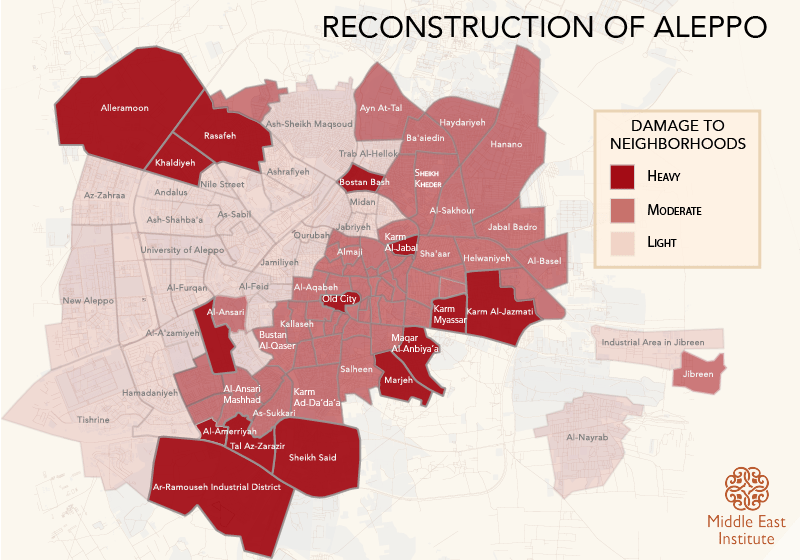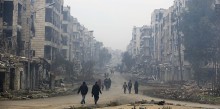'Mazen Al-Hummada set out to bring greater democracy to his Syria, but instead found torture and abuse at the hands of the ruling regime.
At a forum titled Torture in Syria and the Caesar Files in Malaysia on Saturday, Mazen, the youngest of 17 children from a family he described as politically active, recounted a life of terror and repression under Syrian president Bashar al-Assad and his predecessor and father, Hafez al-Assad.
Inspired by the wave of protests in neighbouring countries dubbed the “Arab Spring”, Mazen said he began to organise peaceful protests with others to press for democracy, but felt the international community merely stood by watching as the regime allegedly used its “full military power” against unarmed citizens.
The military slowly escalated in violence against Syria’s peaceful protesters and raided activists’ houses at night, at one point surrounding and shelling Mazen’s city with 400 tanks as well as bombing from air and destroying a mosque there, he claimed.
Mazen, 39, said he was arrested thrice. The first time was on April 24, 2011 at the beginning of the peaceful protests in Syria, and the second was on November 2011.
In the third arrest on March 15, 2012, Mazen and his two younger nephews were delivering 65 bottles of baby formula to a doctor when they were handcuffed and transported to the Air Force’s intelligence branch’s prisons.
“Being arrested for milk, for them, is a bigger justification than holding a weapon… So anyone that relieved the pressure by the regime under siege by the regime, anybody doing humanitarian work was targeted in the first place.
“Because the regime was fighting its people, the regime was trying to break the will of the people, so in a big part they wanted to stop things like that,” he said.
Blindfolded and beaten upon arrival at the prison, Mazen claimed all detainees were then made to strip to their underwear throughout detention and squeezed into tiny cells measuring 5-sq metres and packed with 50 people forced to huddle.
Some smaller 2-sq metres cells held up to 11 people who were forced to take turns every couple of hours to sit, Mazen said.
Some were so cooped up that their skin began to rot, he added.
Mazen told interrogators that he joined the protests, despite having a good job at a foreign oil company, as dignity could not be traded for all the money in the world.
Asked to confess to being a violent terrorist and to name his weapon of choice, Mazen said: “Toshiba camera”.
His interrogators responded with more torture.
“They laid me on the ground on my back, they broke all my ribs, they flipped me over and then they started beating me. Four of them, gigantic men, they stepped on me,” he claimed.
Insisting on his answer of “camera”, Mazen was then left dangling 40cm above the ground with his hands cuffed to a window.
“It became so heavy because all the weight was on my wrists and you start to feel that all your arms are going to be cut off, and so you scream and they shove a shoe in your mouth and told you to shut up,” he said
Cigarettes and hot iron bars were also used to burn his legs that still bear the scars now.
Mazen said he gave in when the interrogators placed a metal clamp on his genitals and tightened it to the point he felt it was being severed.
A metal rod was also inserted in his rectum, he alleged as he broke down from recounting the episode.
Claiming that children as young as seven were also forced to confess to being armed terrorists, Mazen said he initially refused to confess as he believed he would be executed based on the the forced admission.
He said he did not know at that time that there was a government order by 2012 for all arrested to confess to using violence in order to enable Syria to tell the United Nations that the detainees were terrorists.
Tortured to the point that he started urinating blood, Mazen was taken to the hospital, only to find out that conditions there were no better.
Chained with two other detainees to a bed and permitted toilet breaks every 12 hours, Mazen said they would run to and from the toilet with their hands shielding their heads from beatings.
“You open the first bathroom stall, you see three bodies stacked on top of each other, lifeless. You start questioning: ‘Am I conscious? Is this real? Is this my country?’
“You start thinking you are sick so you are hallucinating, so you close the door and you walk out,” he said.
After five days, he insisted he was well and begged the doctor to send him back to the prison that he felt was more merciful.
Mazen was released 15 months later, in June 2013, after being brought before a judge. He then returned to his city, only to find that it was now a “ghost town” and completely destroyed by the Syrian government in an all-out war during his detention.
While he has now joined his sister in the Netherlands, Mazen still struggles with not knowing the fate of the two nephews who were arrested with him in 2012. There is also no news of his brother who was arrested while Mazen was in prison.
“I try not to look back, I try to continue looking forward, looking backward is just carnage, I would go crazy, there would only be chaos, there would only be catastrophe, so I look forward. What I want is to pursue justice, I know justice is a very long and slow road,” he said, hoping that the “criminals” would eventually be held to justice by the international community and the courts.
Mr Mouaz Moustafa, the executive director of US-based advocacy group Syrian Emergency Task Force (SETF) who translated for Mazen, said the ongoing civil war in Syria, now in its seventh year, is conservatively estimated to have killed half a million people.
He said 14 million or over half of Syria’s 23 million population have been displaced, including an estimated three million displaced internally while others have become refugees.
“Tens of thousands, many of them women and children remain in Assad jails, these are not normal jails, you go and never return unless you are extremely lucky or by a miracle of god you are able to escape,” he said, adding that the Syrian government has not allowed the release of women and children despite it being non-threatening to national security.'









